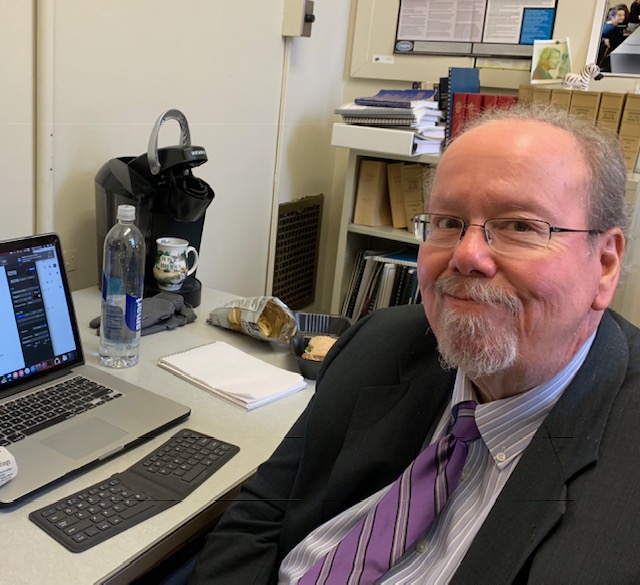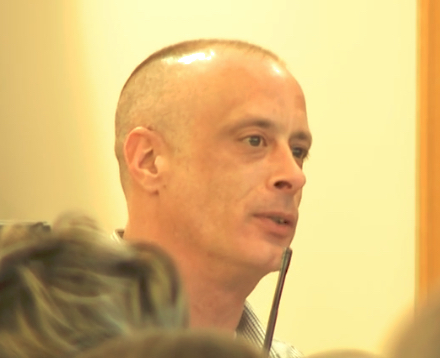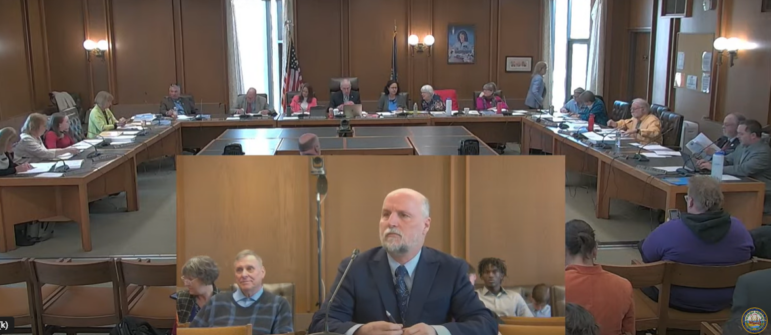
By GARRY RAYNO, InDepthNH.org
Often in the world of politics, what is not said is more important than what is said.
Politicians like to propose things and tell everyone how it’s greatly needed and will be more efficient and consumer friendly.
What they don’t say is the changes will impact people’s jobs, disrupt routine and run the institution more like a business, when it isn’t a business.
During Gov. Chris Sununu’s budget address, he caught many by surprise when he proposed merging the University System of New Hampshire with the Community College System of New Hampshire. The plan would create one system for the state’s 11 higher education institutions.
Full disclosure: I am a University of New Hampshire graduate and have many friends and acquaintances who attended the fine institution or work there now.
When I was a student at the University of New Hampshire, the state paid a far greater percentage of the tuition costs for in-state students so you did not need to borrow the equivalent of a mortgage to pay for four years of study.
And that is one of the problems today, the high cost of a higher education.
The average working class family in New Hampshire, or in any New England state, cannot afford to pay for a college education.
The result is student debt in New Hampshire and New England is some of the highest in the country.
That is one problem facing higher education, a growing demand for more financial aid, and the other is fewer and fewer students are graduating from high school.
The impact of finances and demographics have been on the horizon for a while, and institutions have tried to adjust slowly without making wholesale changes, using more adjunct professors, building endowments, requiring students to live on campus longer, cutting faculty and staff or not replacing retirees.
Public institutions are dependent on politicians for money and for capital support, and that is another problem.
People who attended UNH or Plymouth State University or Keene State College have an allegiance to or an affection for the institution as they play a large part in their transition from youth to adult. It is not just the academics that people remember.
The community college system has always been the poor sister to the university system but in recent years has been the cornerstone for training and retraining people for the state’s workforce for critical jobs in health care, construction and manufacturing sectors and the electronics field.
The system has always been “lean and mean” as it had to be flexible to meet the needs of the state’s business community.
That is not to say the university system does not, because it does, but at a different level like research and development.
But the community college system is a life saver for many in the state who need a little more education to find that next job or to re-train for another profession because theirs collapsed.
The two systems have moved closer together as they attempted to be more seamless for students starting at a community college and then transferring to a university institution.
Both systems are educational institutions but much more than that to the people who attend or attended them.
So when you first hear the governor wants to merge the two systems, many people’s first reaction is “No.”
Leaders of the community college system are hesitant to jump with both feet into the merger, fearing the system will be swallowed by the larger university system and lose its affordability and its voice.
The university system leaders are not quite so recalcitrant, but they too want to know more of the details and how other states have fared that combined systems, etc.
At a public hearing Friday before Division II of the House Appropriations Committee, the governor discussed his merger plans and why the change is needed immediately, but like he often does, the real details are yet to come, much like the secure psychiatric unit he wanted to build on State Hospital grounds two years ago but there were never any concrete plans.
For the merger, he proposed creating a 15-member board with five representatives from the university system, five from the community college system and five he would appoint.
Later we learned the board would begin governing the two systems July 1 and the members would need Governor and Executive Council approval.
The July 1 date forces a decision on whether to move forward with the merger in the next three months, and the governor controls the council’s agenda, so he would control who is appointed to the new board.
That may not have been a surprise to the higher education officials, but it was to many listening to the governor.
And some of the members of the committee from both parties expressed a desire for a little more time to ensure what is done does not harm either system.
The details are in House Bill 2, which contains the changes in law needed for the numbers in House Bill 1.
HB 2 was supposed to be released over the weekend, but was still not available late Saturday.
Sununu said several times Friday the merger is not about saving money, it is about creating a more efficient system that allows students to smoothly move from one institution to another to access a course not offered at his or her college, something that few students are likely to do.
The merger may not be about the money, but his proposed budget reduced state spending on the two systems by $17.6 million over the next biennium, not an insignificant amount of money.
He talked about the problems of pumping money into an old system when it really needs to evolve to address the reality higher education faces in the next decade.
No one disagrees significant change needs to happen for the institutions to be financially viable.
Sununu tipped his hand a bit when he said, “I view this as school choice for higher education.”
He envisions a system where a student enters one institution but has everything available in the system, sort of like an a la carte menu for higher education.
That’s fine eating at a restaurant or shopping at a grocery store, but higher education is different.
The 11 facilities in the two systems are not businesses, they are institutions of higher education and an a la cart plan creates all kinds of issues including collective bargaining agreements, benefits and working conditions.
If too few students take an art course, or a creative writing course or study theatre crafts for the institution to break even, should those courses be eliminated?
Should universities eliminate their philosophy departments or English Literature degrees, or athletic programs?
Colleges and universities serve many purposes including learning for learning’s sake and acquiring skills like critical thinking, which is so needed today.
That is why the merger needs to be done right and not rushed to save a few dollars.
There is much at stake. The merger will affect many people who work in public higher education, and many more people who attended one of the institutions indirectly.
Garry Rayno may be reached at garry.rayno@yahoo.com.
Distant Dome by veteran journalist Garry Rayno explores a broader perspective on the State House and state happenings for InDepthNH.org. Over his three-decade career, Rayno covered the NH State House for the New Hampshire Union Leader and Foster’s Daily Democrat. During his career, his coverage spanned the news spectrum, from local planning, school and select boards, to national issues such as electric industry deregulation and Presidential primaries. Rayno lives with his wife Carolyn in New London.
InDepthNH.org is New Hampshire’s only nonprofit, online news outlet dedicated to reporting ethical, unbiased news and diverse opinions and columns.





